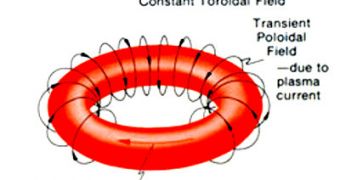On Monday, April 26, officials from the Russian Federation and Italy announced the signing of a new cooperation agreement between the two nations, centered on the development and construction of a new tokamak. The advanced machinery will be designed by Italian investigators, and built on Russian soil. Scientists from the two nations hope that the high-tech instrument will be capable of obtaining self-sustaining nuclear fusion in a decent amount of time. In less cryptic language, this means that the project could achieve fusion before the delay-plagued International Thermonuclear Experimental Reactor (ITER).
A tokamak is not really a nuclear reactor. It can best be described as a scientific equipment that produces a massive magnetic field. This is then used to confine superheated gas called plasma into a torus (donut)-shaped containment unit, hence the alternative name for the machine, a magnetic confinement device. As this happens, plasma heated at millions of degrees is compressed more and more onto itself, until finally the nuclei of atoms within start fusing with each other. This can only be achieved if magnetic fields are used, as no existing materials could otherwise withstand the heat.
The new international collaboration, called Ignitor, was decided upon after Italian Prime Minister Silvio Berlusconi, and his Russian counterpart Vladimir Putin, managed to persuade each other and other ministers to sign the document. The tokamak will be produced according to the directions of renowned expert Bruno Coppi. The scientist, who is based in the United States, at the Massachusetts Institute of Technology, has been working on MIT's own tokamak initiative for about 40 years, ScienceNow reports.
The expert explains that, though massive amounts of energy need to be put into obtaining thermonuclear fusion at first, the process is not energy-intensive after “ignition” is achieved. This is a threshold beyond which the nuclear reaction becomes self-sufficient, and excess power is produced. This energy can then be removed from the tokamak and converted into electricity that can be fed into power grids. When compared to the ITER, the Ignitor tokamak is smaller (1.3 meters compared to its counterparts' 6.2 meters), but the Russian-Italian initiative relies on different principles to work, as well as on significantly-stronger magnetic fields.

 14 DAY TRIAL //
14 DAY TRIAL //